- Instagram Ads Cost Factors
- Average Costs of Instagram Ads
- Instagram Ads vs. Facebook Ads
- Optimizing Instagram Ad Performance
- Strategies to Lower Instagram Ad Costs
- Types of Instagram Ads
- Instagram ads cost FAQ
With over 1 billion active users, Instagram isn’t just a platform—it’s a goldmine for potential customers. If you’re not using Instagram Ads, you’re leaving money on the table. I would even go as far as saying you’re missing out on explosive growth, tons of leads, and market domination without Instagram Ads.

But how much do Instagram Ads cost?
The cost of Instagram Ads depends on your bidding model, such as cost-per-click (CPC) or cost-per-impression (CPM).
Typically, companies pay an average of $0.50 to $1 per link click. In highly competitive industries, like apparel, costs may rise, and Instagram Ads can go up to $3.00 per click.
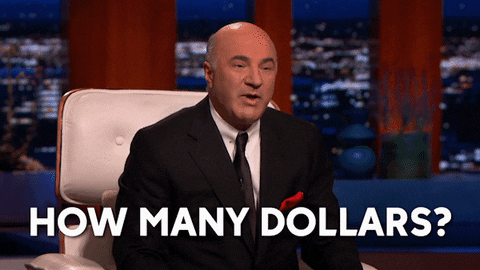
Instagram Ads are still relatively new to some companies running social media advertising campaigns. Our goal is to equip your company with strategic tactics, no matter where you stand. This guide will help you understand the cost of running ads on Instagram, how it compares to Facebook Ads, how the cost is determined, and much more!
Quick summary
First, we’ll explore the cost and strategic considerations of running Instagram ads, noting that the average cost-per-click (CPC) typically ranges from $0.50 to $1, but can rise to $3 in competitive industries. Key factors influencing ad costs include bidding strategies, target demographics, competition, and ad relevance. Next, we’ll compare Instagram ads with Facebook ads, highlighting differences in cost and audience engagement across platforms. Finally, we’ll emphasize the importance of tracking key performance metrics like CTR, CPC, and CPA to optimize campaign effectiveness and reduce costs.
How much do Instagram ads cost?
Let’s take a look at what various resources say.
AdEspresso found that the average cost-per-click on Instagram is $0.80.
On average, Instagram ads have a cost-per-click between $0.70 and $1.00. However, many elements can affect the cost of your Instagram ads.
The cost of Instagram ads ultimately depends on the audience you are targeting, which is why knowing your Instagram demographics is so critical.
The going rate for Instagram ad post design can vary depending on your experience, portfolio, and location. In general, you can expect to charge anywhere from $50 to $200 per post. Instead of creating the post, use user-generated content and showcase customer-centric images to increase sales.
For example, Toyota increased its ad engagement by 440% using UGC with the launch of “Feeling The Street”—a global campaign highlighting and celebrating the world’s best street performers.

As shown in the diagram above, women are much more active than men on Instagram, which leads to higher CPCs for targeting female audiences. However, age demographics tell a different story.
Most Instagram users are under 50. According to AdEspresso, the average cost per click (CPC) for Instagram ads in 2017 ranged from $0.70 to $0.80 across all age groups. The highest CPCs were observed in the 18-24, 25-34, and 35-44-year-old demographics.
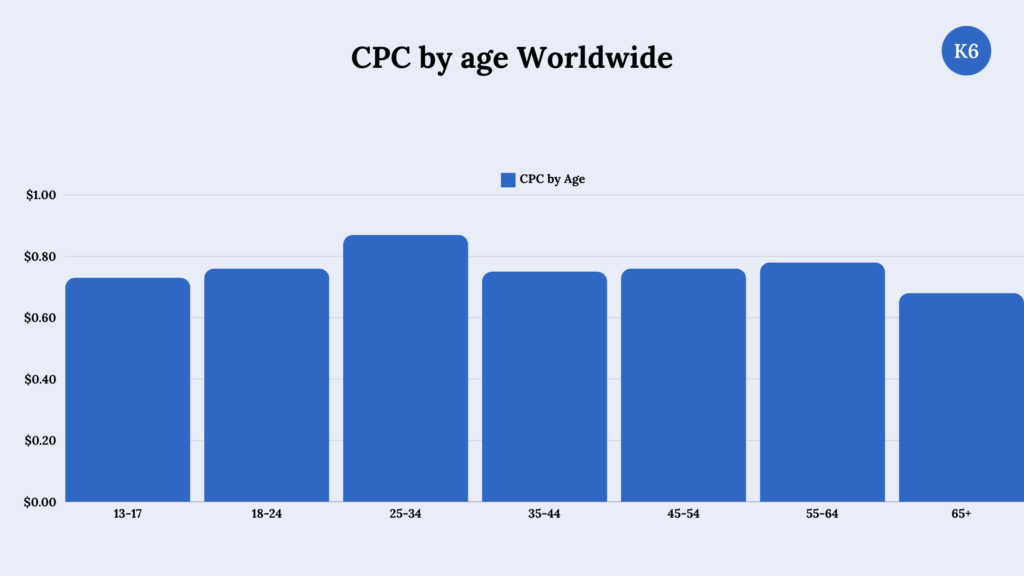
CPC estimates vary based on the campaign. For instance, ad costs for Instagram are likely to rise during major events or holidays like Black Friday, Thanksgiving, Labor Day, and Cyber Monday. This fluctuation is also reflected in engagement metrics, where posts may receive more Instagram likes during these peak periods. This highlights the importance of timing in maximizing both reach and interaction on Instagram. For example, on Father’s Day or Valentine’s Day, you can give your father a unique Custom Belt Buckles to express your gratitude and love.
Designing different advertising words according to different products and audiences can increase the number of likes on the post. Instagram is popular among women, especially star-chasers. You can publish highly relevant posts from the perspective of women’s clothing and celebrity peripherals, which may lay a customer base for your business.
Instagram Ads compared to Facebook Ads
Facebook and Instagram are two of the most successful social media advertising platforms, making it worthwhile to compare them. Which platform offers your business the most cost-effective option and provides the best network to reach your audience?
| Social Network | CPC | CPM (cost per thousand impressions) |
|---|---|---|
| $0.20-$2.00 | $6.70 | |
| $0.97 | $7.19 |
In addition to assessing the costs of Instagram and Facebook ads, it’s important to consider each platform’s demographics. While Facebook can target almost any age group, Instagram excels at reaching audience members aged 25 to 29.
Focus your efforts on the social media platform that provides the most value and best results for your ad campaign. Even if you can advertise on one site for less, you might miss the opportunity to connect with important shoppers and leads.
A study by Rival IQ analyzed 2,100 of the most engaging brands and companies. As shown in the image below, Rival IQ found that Instagram had the highest engagement rate among all social media platforms. This means that even if you have to pay a bit more, your insights will be more valuable in the end.
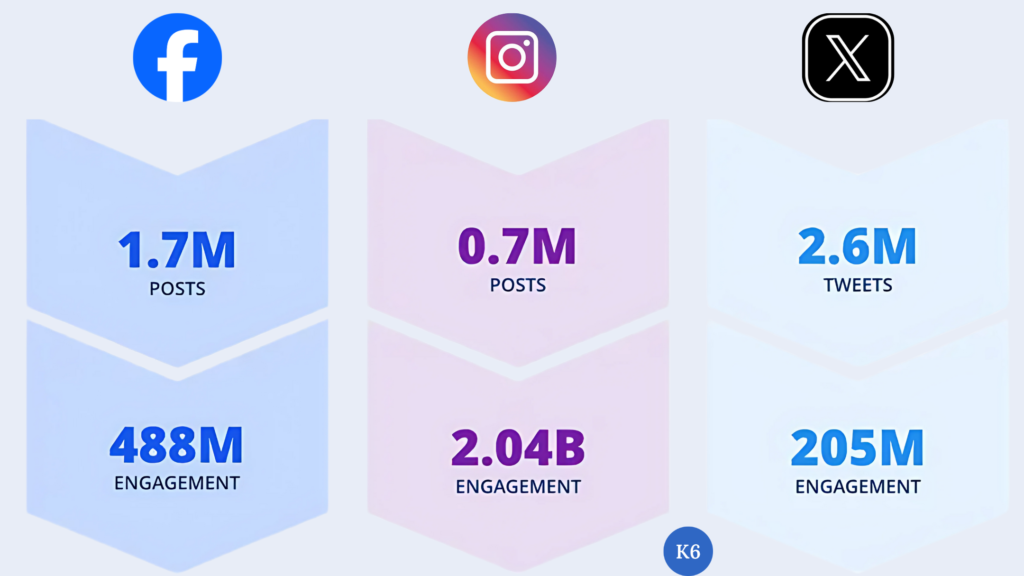
Shopify conducted a marketing report that shows Instagram users spent an average of $65, compared to Facebook users, who spent only $55 per referred sale.
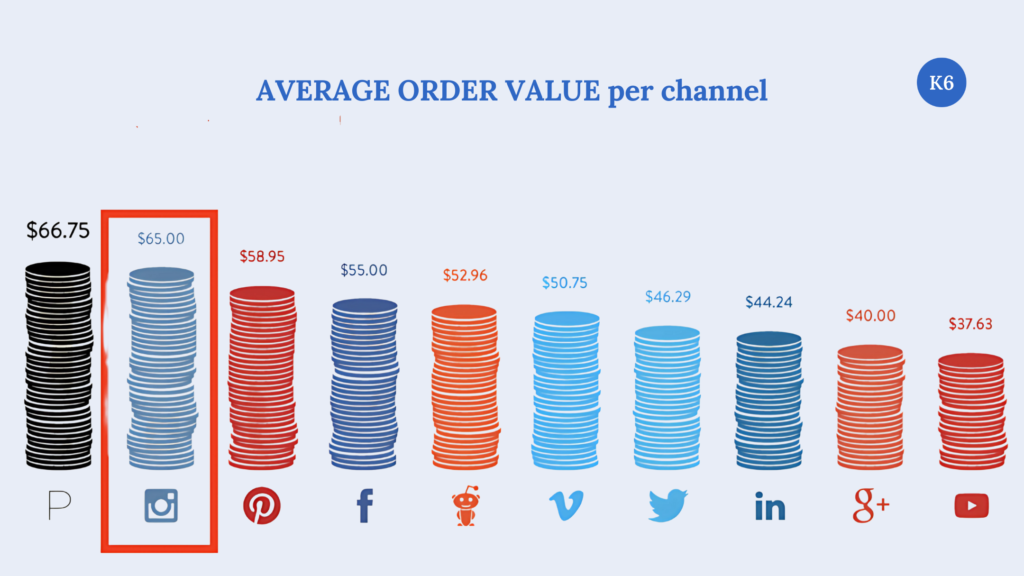
How is the cost of Instagram ads calculated?
When determining ad costs, Instagram follows the same guidelines as its parent company, Facebook. This means that launching an Instagram ad campaign puts you in a global competition for people’s attention.
Four main factors influence how much you’ll pay:
- Bid amount
- Relevance score
- Estimated action rates
- Level of competition
Bid Amount
Your bid amount determines how much you spend on an Instagram ad campaign. It reflects how much you’re willing to pay for leads, and it directly impacts your overall costs.
Instagram tends to have higher bid rates, so be prepared to pay more for clicks and impressions.
For example, if your budget is $500 and your bid is $2 per click, you’ll get 250 clicks. However, with a $1,000 budget and the same $2 CPC (cost per click), you’ll receive 500 clicks. Lowering your bid to $0.50 in the same scenarios would significantly increase the number of clicks for both budget amounts.
Relevance Score
Your ad’s relevance score also impacts the cost of your Instagram ads. This score reflects how relevant your ad is to the Instagram users who see it.
Instagram prioritizes delivering relevant content to users’ feeds, and your score is determined by how users engage with your ad. The more positively they respond, the higher your relevance score will be.
Estimated Action Rates
Estimated action rates also impact your Instagram ad costs. According to Instagram, this rate is based on the likelihood of users interacting with your ad. Essentially, Instagram evaluates how probable it is that your audience will engage with your ad.
These engagements include actions like clicks and conversions. Instagram prioritizes ads that it believes users are more likely to engage with.
If Instagram determines that your ad has a high likelihood of interaction, it will prioritize your ad, resulting in a lower bid amount. This can help you achieve more leads and conversions at a reduced cost.
Competition
Competition plays a significant role in determining the cost of your Instagram ads. When you target a specific demographic, there will always be competitors aiming to reach the same audience. This competition can drive up the cost of your ad campaign.
To effectively analyze your competition, consider using a tool like Hootsuite or Sprout Social. These platforms provide in-depth competitor insights and analytics, helping you understand what strategies your competitors are employing.
If multiple advertisers are bidding to target the same audience, it can result in a bidding war. In such cases, businesses must outbid each other to secure prime ad placement, which can cause your CPC (Cost Per Click) to increase as you compete for visibility.
Additional Factors Affecting Instagram Ads Costs
- Holidays and Events: Competition during holidays, particularly Christmas, is significantly higher, as many businesses vie for valuable leads, driving CPC upwards. It’s essential to be aware of holidays and events that coincide with your ad campaign and to budget accordingly.
- Day of the Week: Engagement on Instagram tends to be higher on weekdays compared to weekends. Therefore, you should anticipate paying more for ads run on days like Tuesday than on Sunday.
- Gender: Targeting female audiences often incurs higher costs than targeting males. Women are generally more likely to interact and engage on Instagram, leading to increased expenses for reaching female viewers.
- Target Market: The specific market you aim to reach directly influences your Instagram ad costs. For instance, B2B companies typically face higher costs due to a smaller audience on Instagram compared to B2C companies. Additionally, some industries, such as apparel, experience heightened competition, which can lead to increased advertising costs.
Despite the higher expenses associated with Instagram ads, advertisers have control over how they allocate their budgets. You can choose between a daily budget, which restricts spending to a set amount each day, or a lifetime budget, which allows you to run your ads for a specific duration until the budget is exhausted.
What are the most important Instagram ads metrics?
The key Instagram metrics to track for advertising success include click-through rate (CTR), cost per click (CPC), engagement rate, conversion rate, and cost per acquisition (CPA).
These KPIs provide valuable insights into the effectiveness and cost-efficiency of your campaigns. CTR and CPC help assess ad engagement and spending efficiency, while the engagement rate and conversion rate measure how well your ads resonate with your audience and drive desired actions. CPA is essential for evaluating the cost of acquiring new customers, enabling you to optimize campaigns for profitability. By monitoring these metrics, you can make data-driven decisions that enhance the performance of your Instagram ads.
1. Click-Through Rate (CTR)
Click-Through Rate (CTR) measures the frequency with which users click on your ad after viewing it. It is calculated by dividing the total number of clicks by the total number of impressions. This metric allows you to assess the effectiveness of your ad creatives in capturing audience attention. A high CTR indicates that your ad resonates well with viewers, serving as a crucial indicator of your content’s engagement level.
However, it’s important to contextualize CTR within your campaign objectives. For instance, a high CTR coupled with low conversion rates may suggest that while the ad successfully attracts clicks, it fails to meet user expectations or fulfill their needs effectively.
2. Cost Per Click (CPC)
CPC (Cost Per Click) is a vital metric for assessing the cost-efficiency of your advertising campaigns. It indicates how much you’re spending for each click generated by your ad, making it particularly important for performance marketers who prioritize cost control. By monitoring CPC, you can ensure you’re not overspending on campaigns that fail to deliver substantial ROI.
Tracking CPC over time and comparing it across different campaigns enables you to pinpoint which ads excel in cost efficiency. For example, if you notice high click-through rates (CTRs) alongside an increasing CPC, it may be time to reevaluate your bidding strategy or refine your creative elements to achieve more cost-effective results.
3. Engagement Rate and Engagement on Reach
Engagement rate is a crucial metric for evaluating the quality of your Instagram content. It is calculated by dividing the total number of likes, comments, and saves by the number of followers. A high engagement rate indicates that your content resonates with your audience, but it doesn’t provide the complete picture.
To gain a more nuanced understanding, consider engagement on reach, which divides total engagements by the total number of people who viewed the post, regardless of whether they follow you. This metric is particularly valuable as it reveals how your content performs beyond your immediate follower base, offering clearer insight into its true reach and popularity.
4. Conversion Rate
If your goal is to drive conversions—whether that’s a purchase, a lead, or another desired action—then conversion rate becomes a key metric. This percentage reflects how many users take the desired action after engaging with your ad, making it essential for assessing how effectively your ads convert traffic into tangible outcomes.
To track conversions effectively, it’s crucial to utilize tools like Facebook’s Pixel (which also applies to Instagram ads) or Google Analytics. These tools enable you to monitor user interactions on your website or app and link them back to your Instagram ads. A low conversion rate may indicate a disconnect between your ad messaging and landing page content, highlighting the need for optimization.
5. Cost Per Acquisition (CPA)
CPA (Cost Per Acquisition) extends beyond CPC (Cost Per Click) by concentrating on the overall cost of acquiring a new customer or lead through your advertising efforts. It is calculated by dividing the total ad spend by the number of conversions. CPA is especially crucial for eCommerce and lead-generation campaigns, where the primary goal is to maximize return on investment.
A high CPA can signify inefficiencies within your sales funnel, potentially stemming from ineffective landing pages or misaligned targeting strategies. By consistently monitoring your CPA, you can make informed adjustments to your campaigns, enhancing the cost-efficiency of customer acquisition.
6. Traffic to Your Website
Driving traffic to your website is often a primary goal of Instagram ads. However, merely tracking clicks is not enough; it’s crucial to analyze how that traffic behaves once it arrives on your site. By leveraging Google Analytics, you can monitor key metrics such as sessions, bounce rates, and time on site for users coming from Instagram.
To gain deeper insights into your campaigns, implement UTM (Urchin Tracking Module) parameters in your URLs. This allows you to track specific campaigns or ads, enabling you to pinpoint which initiatives drive the most valuable traffic. By understanding user behavior post-click, you can refine your ad strategy to focus on high-performing campaigns that convert, ultimately maximizing your return on investment.
7. Impressions and Reach
Impressions and reach are essential metrics for assessing the visibility of your ads. In simple terms, impressions indicate the total number of times your ad was displayed, while reach represents the unique number of users who encountered your ad. Together, these metrics provide a clear picture of your campaign’s exposure.
However, it’s important to note that high impressions and reach alone do not guarantee campaign success. You can achieve impressive visibility without fostering meaningful engagement or driving conversions. Therefore, these metrics should be evaluated in conjunction with other key performance indicators (KPIs) to form a holistic view of your campaign’s effectiveness. By integrating impressions and reach with engagement metrics and conversion rates, you can better understand the true impact of your advertising efforts.
8. Sales Generated
Ultimately, revenue remains the most critical metric for any business. To assess the true impact of your campaigns on the bottom line, it’s essential to track sales generated from Instagram ads. This key performance indicator (KPI) transcends traditional metrics like engagement or cost-per-click (CPC), offering a direct view of the financial benefits of your advertising efforts.
To effectively track sales, you must establish strong attribution models. This involves utilizing Instagram’s native tracking tools alongside third-party analytics platforms. The data you gather will enable you to optimize your campaigns for greater profitability.
How do Instagram ads work?
Instagram ads are paid content that appears in Instagram Stories and news feeds, targeting users likely to be interested in your products or services.
These ads are tailored based on users’ demographics and interests, designed to seamlessly blend into the platform so that users may not even recognize them as advertisements.
There are two key indicators that a post is a paid advertisement. The first indicator is the word “Sponsored,” which appears beneath the business’s name.

The second indicator is the call-to-action (CTA) displayed at the bottom of the post. Typically, these CTAs feature phrases like “Shop Now,” “Learn More,” or “Book Now,” depending on the campaign’s objective.

How can you lower your Instagram ads cost?
When it comes to social media advertising, you want to do everything possible to reduce advertising costs. Below are a few best practices that can help you lower the expense of your Instagram ads and maximize your return:
- Use automatic bidding
- Use precise targeting
- Set goals
- Create relevant landing pages
- Test your ads
1. Use Automatic Bidding
If you haven’t used Instagram ads before, employing automatic bidding for your campaign is advantageous. It’s a straightforward way to obtain a bid that suits your campaign.
Automatic bidding is ideal if you lack historical data to inform you of an appropriate CPC for your campaign. This feature will help you identify the bid amount that aligns with your objectives.
By utilizing automatic bidding, you prevent your company from overbidding for an ad. The absence of prior data can make it challenging to determine the right bid amount, potentially leading you to bid more than necessary.
Automatic bidding is a smart way to minimize Instagram ads expense.
2. Use Precise Targeting
When setting up your Instagram ads, the goal is to target individuals who are likely to be interested in your products or services. Use precise targeting to reach your desired audience.
Instagram allows you to target people by:
- Location: You can target individuals based on their geographic location, ranging from a broad country to a specific postal code.
- Demographics: The most common method of targeting leads is through demographic information, including gender, age, and race.
- Interests: As people engage on social media, you can observe their interests. Whether it’s design or tech, you can target individuals based on their preferences.
- Habits: If someone takes specific actions on your website, you can target them based on those behaviors.
By utilizing precise targeting, you will reach more individuals who are interested in your products and services. This means your ad copy will be more relevant to them, helping you achieve a higher ad rank and a lower CPC. This will also lead to an increase in sales, which will help cover the costs of running the campaign and support your business plan.
3. Set Goals
Setting goals will help you maintain focus on what you want to achieve with your advertisement.
There are three main goals you should prioritize for your Instagram Ads:
- Awareness: Concentrate on increasing awareness of your company, brand, product, app, or service through an awareness campaign. You want to draw attention to it and help people become familiar with it. For this goal, focus on running a CPM campaign.
- Consideration: If your goal is consideration, you will emphasize educating your audience. You’ll want to provide more persuasive information that encourages them to convert. To this end, focus on generating clicks, views, and leads.
- Conversion: Many businesses aim to get their customers to buy their products, install their apps, or use their services. If you focus on conversions for your campaign goal, you should create persuasive copy that encourages your audience to purchase your products or use your services immediately.
By setting goals, you will have a much more cohesive campaign. Effective ad copy leads to greater engagement and conversions. Instagram aims to promote ads that they believe users will interact with and connect to.
4. Make Relevant Landing Pages
Most businesses make the mistake of directing leads to their homepage after clicking on their Instagram ad. This does not encourage engagement, as people are not directed to an ad-relevant landing page. It ultimately comes down to leveraging a strong web design strategy that fosters coherence.
When a customer is taken directly to the product, they are more likely to convert. Even better, directing them to an interactive product catalog where you showcase all your offerings can significantly optimize your ad campaigns.
5. Test Your Ad
You must test your ads to ensure you release the best version possible. At this stage, many companies seek professional help with marketing tasks because testing your ads allows you to create more relevant ad copy. Relevant ad copy means you will achieve a higher ad position, resulting in a lower CPC.
Which type of ads can I launch on Instagram?
There are five types of ads you can launch on Instagram, each useful in its own way. Some companies claim there are actually seven types of Instagram ads, including Explore and Reels ads, but those aren’t options you can select directly.
- Image ads
- Video ads
- Carousel ads
- Collection ads
- Shopping ads
1. Image ad
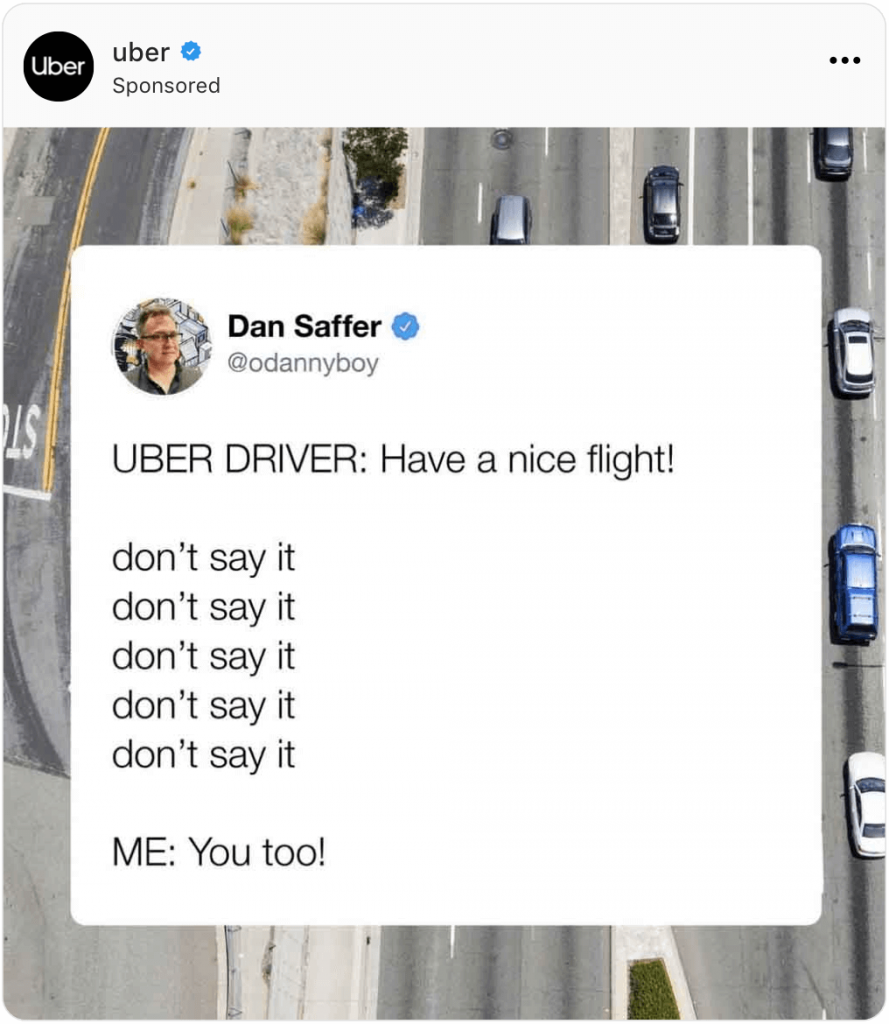
Instagram image ads are the most effective ads you can use. They are simple to create and can drive tremendous traction for your brand. Instagram image ads are the most effective ads you can use. They are easy to create using an AI ads generator and can drive significant traction for your brand. The important thing here is to keep it simple while being creative. How do you do that? Focus on one clear message at a time for your Instagram ad.
2. Video ad

While Instagram video ads can vary more in quality than image ads, they can still deliver fantastic results. The only downside? You’ll likely need to invest more time in the ideation and execution phases of your video ad.
3. Carousel ad

These ads are a great way to communicate a story to your potential clients. In other words, they provide a more creative medium to showcase your brand in ways that still images can’t. eCommerce and SaaS brands can greatly benefit from this type of advertising.
4. Collection ad

Collection Instagram ads are ideal for eCommerce stores with multiple product collections. They offer a more immersive experience that can significantly enhance your brand’s image. While they may not be the most cost-efficient in terms of clicks, they can be powerful allies for brand awareness campaigns.
5. Story ad
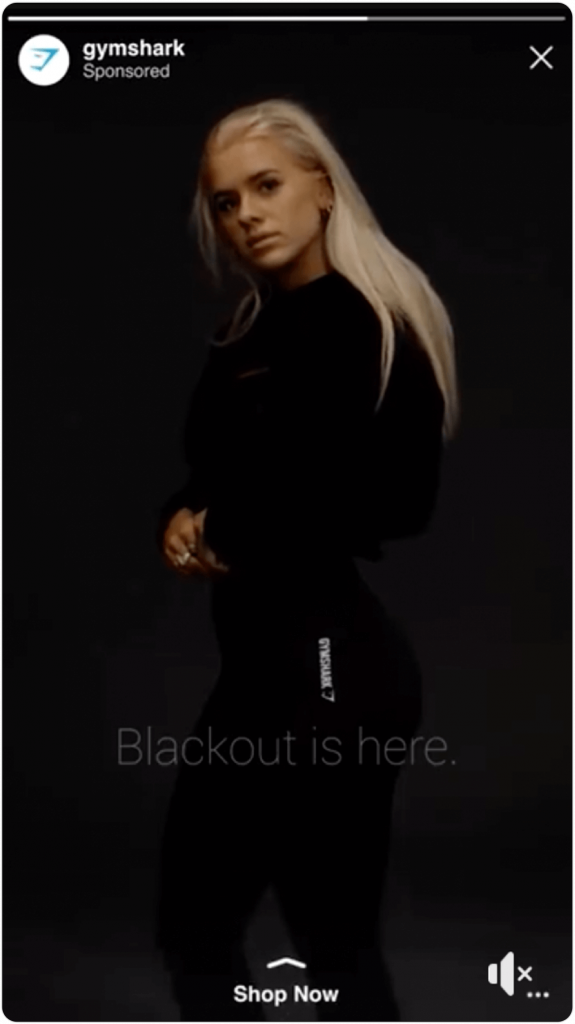
How can I launch Instagram ads?
There are three ways to start running ads:
1. Instagram App
You can share posts that you’ve already created on Instagram by accessing ads in the Instagram app. Simply open the app and choose the post you want to promote. Once the post is selected, you can launch it as an ad.
After launching your promoted post, you can begin monitoring how many people see and engage with it. Zintego recommends taking the necessary time to analyze your metrics, as this will provide you with a deeper understanding of your audience.
2. Ad Manager
Instagram Ads utilizes the same Ads Manager tool as Facebook, providing a seamless and integrated advertising experience. This platform is both simple and secure, making it an excellent choice for businesses looking to run effective ads on Instagram.
By leveraging Ads Manager, you can efficiently organize your advertising campaign, allowing you to set clear objectives and define your target audience. This tool also enables you to make real-time adjustments to your campaign based on performance data, ensuring that your ads remain optimized for maximum impact. Additionally, you can measure your campaign’s progress through comprehensive analytics, helping you track key metrics such as impressions, engagement, and conversions.
Overall, using Ads Manager is a strategic way to launch and manage an advertising campaign for Instagram, allowing brands to reach their audience effectively and drive significant results.
3. Instagram Partners
If you don’t have a lot of time or need extra support, you have the option of using Instagram partners. By working with Instagram partners, who are vetted experts, you’ll benefit from their proven expertise. They can assist you in purchasing ads and delivering valuable creative results. For companies that lack experience, this is a perfect alternative. There are also tools to analyze your Instagram performance such as Gramhir Instagram to gain an edge datawise.

Check out our list of killer Instagram ad examples for inspiration and additional tips for your future ad campaigns. We’ve shared numerous secrets that are sure to help you elevate your Instagram ads game, which you could apply to an Instant Experience campaign, for instance.
If you’re ready to start generating more valuable leads with your Instagram ad campaign and maximize your advertising budget, don’t hesitate to reach out to our Instagram ad agency.
Are Instagram ads still worth it in 2024?
Instagram ads are definitely worth it if you’re a brand selling visually appealing physical products. Many people visit Instagram specifically to buy fashion items, and it has evolved into a marketplace for inspiration.
This is why we don’t recommend Instagram ads for every brand. However, as a general rule, if you’re selling to consumers, you should consider advertising on Instagram. Whether you’re offering Internet services or camping equipment, Instagram is the platform to be on for increased visibility and sales.
Is paying for Instagram ads worth it? Absolutely, we firmly believe so. After helping hundreds of brands grow through Instagram ads, we’ve seen its potential firsthand. It’s a highly competitive market, and attempting it on your own could lead to unprofitability.
If you need consulting or someone to manage your Instagram ad campaigns, don’t hesitate to reach out. It’s what we do best!
Instagram ads cost FAQ
1. What are Instagram ads?
Instagram ads are paid promotional posts that appear in users’ feeds, Stories, or Explore tab on the Instagram platform. These ads can be in various formats, including photo, video, carousel, and Story ads, designed to help businesses reach their target audience and achieve specific marketing goals.
2. How much do Instagram ads cost? How much do IG ads cost?
The cost of Instagram ads varies widely depending on factors like your target audience, ad placement, and competition. On average, you might pay anywhere from $0.70 to $1.00 per click or $6.70 to $7.50 per thousand impressions, but actual costs can be higher or lower based on your specific campaign.
3. How does Instagram advertising pricing work?
Instagram ads use an auction-based pricing model where you bid for ad placement. You can choose between Cost Per Click (CPC), Cost Per Impression (CPM), or Cost Per Action (CPA). The amount you pay depends on the bid you set and the competition for your target audience.
4. What is the minimum budget for Instagram ads?
The minimum budget for Instagram ads can vary based on your campaign type and objectives. Generally, you can start with a minimum daily budget of $1 to $5. For more effective campaigns, higher budgets may be required, especially for competitive industries.
5. How can I set a budget for my Instagram ad campaign?
You can set your budget at the campaign level in Instagram Ads Manager. Choose between a daily budget (amount spent per day) or a lifetime budget (total amount spent over the campaign’s duration). Adjust your budget based on your goals and the performance of your ads.
6. What factors affect the cost of Instagram ads?
Several factors influence the cost of Instagram ads, including:
- Targeting options: More specific targeting may increase costs.
- Ad placement: Costs can vary by where your ad appears.
- Ad quality and relevance: Higher engagement can lower costs.
- Competition: High competition for your target audience can drive up costs.
7. Can I control the cost of my Instagram ads?
Yes, you can control your ad costs by setting budgets, choosing bidding strategies, and using cost controls in Ads Manager. Monitoring performance and adjusting settings as needed will help manage costs effectively.
8. How can I optimize my Instagram ad spend?
To optimize your ad spend:
- Define clear objectives: Align your ad goals with your budget.
- Target accurately: Use precise audience targeting to reduce wasted spend.
- Test and adjust: Continuously test different ad creatives and strategies.
- Monitor performance: Use metrics to track ROI and make data-driven adjustments.
9. What are the different types of Instagram ads?
Instagram offers several ad formats:
- Photo Ads: Single image ads in the feed.
- Video Ads: Videos up to 60 seconds in the feed.
- Carousel Ads: Multiple images or videos users can swipe through.
- Story Ads: Full-screen ads that appear between users’ Stories.
- Explore Ads: Ads displayed in the Explore tab.
10. How can I track the performance and cost of my Instagram ads?
You can track performance and cost using Instagram Ads Manager. Key metrics include:
- Cost Per Click (CPC): Cost of each click on your ad.
- Cost Per Impression (CPM): Cost of 1,000 impressions.
- Cost Per Action (CPA): Cost associated with a specific action (e.g., conversion).
- Click-Through Rate (CTR): Percentage of users who click on your ad.
11. Are there any additional fees for Instagram ads?
Instagram itself does not charge additional fees beyond your ad spend. However, if you use third-party tools or agencies for campaign management, there may be additional costs associated with their services.
12. What targeting options are available, and how do they impact cost?
Instagram offers various targeting options to have campaigns much more optimized, including:
- Demographic targeting: Age, gender, location, etc.
- Interest targeting: Based on user interests and behaviors.
- Behavioral targeting: Based on user activity and engagement.
- Custom Audiences: Targeting your existing customers. Specific and detailed targeting can impact costs due to higher competition for niche audiences.
13. How do Instagram ads compare to Facebook ads in terms of cost?
Generally, Instagram ads may have slightly higher costs than Facebook ads due to Instagram’s younger, more engaged audience. However, costs can vary based on your specific campaign goals and target audience. Both platforms share the same Ads Manager, so you can manage and compare costs effectively.
14. Can I adjust my ad budget during a campaign?
Yes, you can adjust your ad budget at any time during a campaign. You can increase or decrease your daily or lifetime budget based on the campaign’s performance and your objectives.
15. How can I create effective Instagram ads to get the most value for my money?
To create effective Instagram ads:
- Use high-quality visuals: Eye-catching images or videos engage users.
- Craft compelling copy: Write clear, persuasive ad copy with a strong call-to-action.
- Leverage targeting: Reach the right audience with precise targeting.
- Monitor and optimize: Regularly review performance data and adjust strategies for better results.
16. How much do Instagram ads cost per month?
When setting your Instagram ad budget, consider starting with at least $150 per month as a minimum. This is based on our experience and can be a good starting point. To estimate costs per sale, track your website traffic and conversion rates. If, for example, you typically convert 1 out of 100 visitors, your cost per click could range from $0.50 to $3.00. This means acquiring a new customer could cost between $50 and $300, depending on your click costs.
17. How much does a sponsored post cost on Instagram?
The cost of a sponsored post on Instagram can vary greatly depending on factors like the influencer’s following, engagement rate, niche, post type, location, and campaign goals. Generally, you can expect to pay anywhere from a few hundred to thousands of dollars, but direct negotiations are common. Researching similar campaigns and using influencer marketing platforms can help you determine a reasonable budget for your sponsored post.

